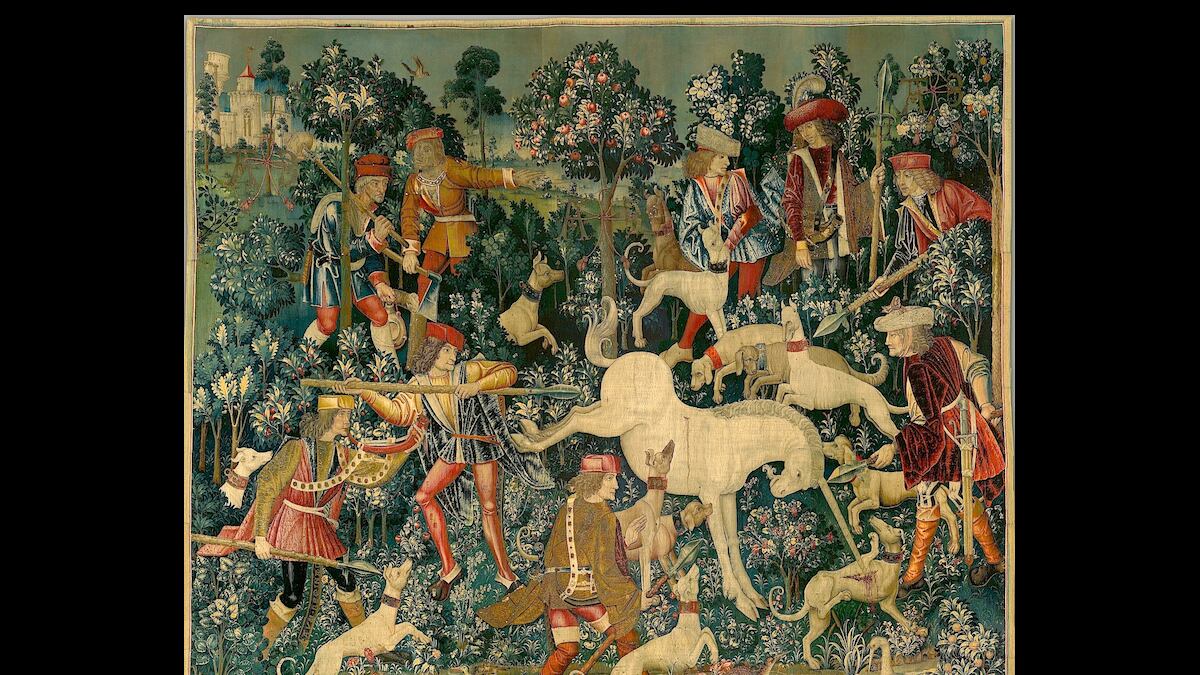
This tapestry was woven in Flanders in about 1500 for a noble French client. It's part of a series of hangings whose unicorn themes are being examined in a show that celebrates the 75th anniversary of the lovely, neo-medieval Cloisters branch of the Metropolitan Museum, up-island in Manhattan. A tapestry like this was the ultimate luxury good and status symbol, worth so much more than a measly painting. What interests me in the textile shown here is how the newly goods-stuffed lifestyle of the European upper class is also this deluxe object's subject: Take a look at the precious fabrics and hunting gear and (especially valuable) the dogs that it shows. Hunting culture, and all its trappings, had become a central place for a noble to display his control of leisure time and surplus resources and available manpower. In that context, the unicorn itself, whatever its symbolic intent, can be thought of as the elite prey that any stylish noble would want to be hunting. In a lovely circular twist, the tapestry's true subject turns out to be the luxe of which it's an example. You could say that one of the treasures it displays is itself. (There's an afterlife to such extravagant hunting: John D. Rockefeller paid a million dollars for the unicorn hangings in 1922.)
For a full visual survey of past Daily Pics visit blakegopnik.com/archive.






